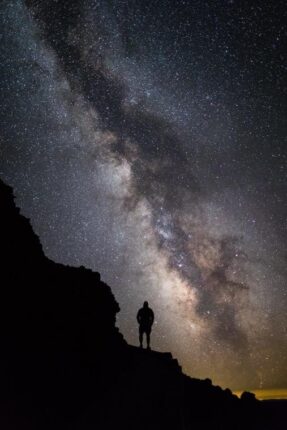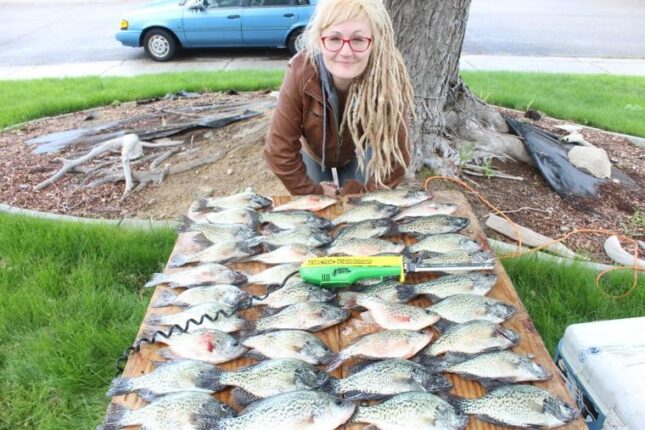So much is going on in the outdoor world that I almost forgot that Father’s Day is barreling down on us. I’d already written and submitted another article and suddenly remembered and had to cancel the first one to slip this one in.
I’m lucky; I had the best mom and dad in the world and I hope you did, too. But even if they aren’t perfect, your dad still holds the position of the most influential man in your life. But if you’re like me, I never knew what to get dad. He seemed to have everything he needed. When he got older, he didn’t hunt and fish as much and pretty much just wanted to work on the farm and fix fences and feed cattle. So all he’d ever ask for is a pair of leather work gloves.
Come on, you can put a little more effort into buying your dad a Father’s Day gift than I did. Now for the good news. If your dad is an outdoorsman then take heart: Outdoorsmen are easy to buy for. We love our gear and gimmicks. And due to a deluge of advertising we’re convinced that if we could just have this lure or that bullet that our life would be great and we’d be successful.
You don’t have to spend a fortune to light up his eyes BUT, you do have to buy exactly what he wants. His tastes/needs will be very, very specific. So do a little research. Ask him what he wants. Get a list so it will still be a surprise as to what he gets. Or talk to a local outdoor store and ask them what is hot.
Or, I get to test a lot of gear every year. Here are some items that have caught my eye.
FISHING
— Mister Twister plastics
— Mister Twister jig heads
— Flies from flydealflies.com These are very economical
— New fishing rod/reel. Buy him a good one that will last for a long time and he’ll remember you every time he uses it.
— Frogg Togg rain gear
— Dip net
— ProLine Baits Spray this in a bag of his Mister Twister tails and it will increase his catch.
— 5.11 tactical pants. Great for fishing due to having multiple pockets.
— Electric fish filet knife from Smith’s Consumer Products
— Heybo fishing shirts
HUNTING
— Smith’s Consumer Products and Knives of Alaska both make the two top boning knives on the market.
— Ammo-this one will be very specific. Ask him what he’d like-5.11 tactical pants. I wear these when hunting.
— Smith’s line of knife sharpening gear
— Day packs
— GPS
— Fire starting gear. Waterproof matches, fire starting tender and I always carry a few cheap Bic lighters.
— Blue Book of Gun Values
— Bowden Tactical. They offer a lot of accessories to dress up his AR
— CLAMTAINERS offer plastic containers to carry his ammo.
— Alien Holsters
— 5.11 their tactical pants are great for hunting
— UMAREX Airguns. Airguns are wildly popular right now and Umarex offers a plethora of options
— JSB makes the best pellets
— XGO base layers
— Otis Lead Remover hand wipes
— Otis Elite Range Box
— Axil hearing protection
BACKPACKING
— Alps Mountaineering “Dash” backpacking chair.
— Alps Mountaineering tents. They offer all sizes.
— Garmont makes some awesome hiking boots. Italian boot companies are legendary for mountain climbing boots.
— Fire starting gear.
— I just found some flashlights. They utilize solar charging so you don’t have to carry a lot of batteries plus, you can also charge other gear off of them. How cool is that? Check out hybridlight.com
— Small aluminum coffee pot. I pick these up at garage sales.
— Alps sleeping pad
— Hiking socks
— Backpacking meals
— Smith’s Consumer folding knives. They offer a lot of options.
— Adventure Medical Kits gear. I love their moleskin for blisters when hiking
— Aquimira filtered water bottles
BONUS GIFTS
— BRG9 Elite 9mm. Very economical. $399.99 16+1 Great EDC gun
— Guided fishing trip
— Go fishing with him this summer. That will be the best gift you could ever give him. I love it when Katy or my girls go fishing with me.
— 5.11 wrist watch
— Diamond Blades Surge knife
Tom Claycomb lives in Idaho and has outdoors columns in newspapers in Alaska, Idaho, Utah, Nevada, Colorado and Louisiana. He also writes for various outdoors magazines and teaches outdoors seminars at stores like Cabela’s, Sportsman’s Warehouse and Bass Pro Shop. He can be reached via email at smileya7@aol.com.



